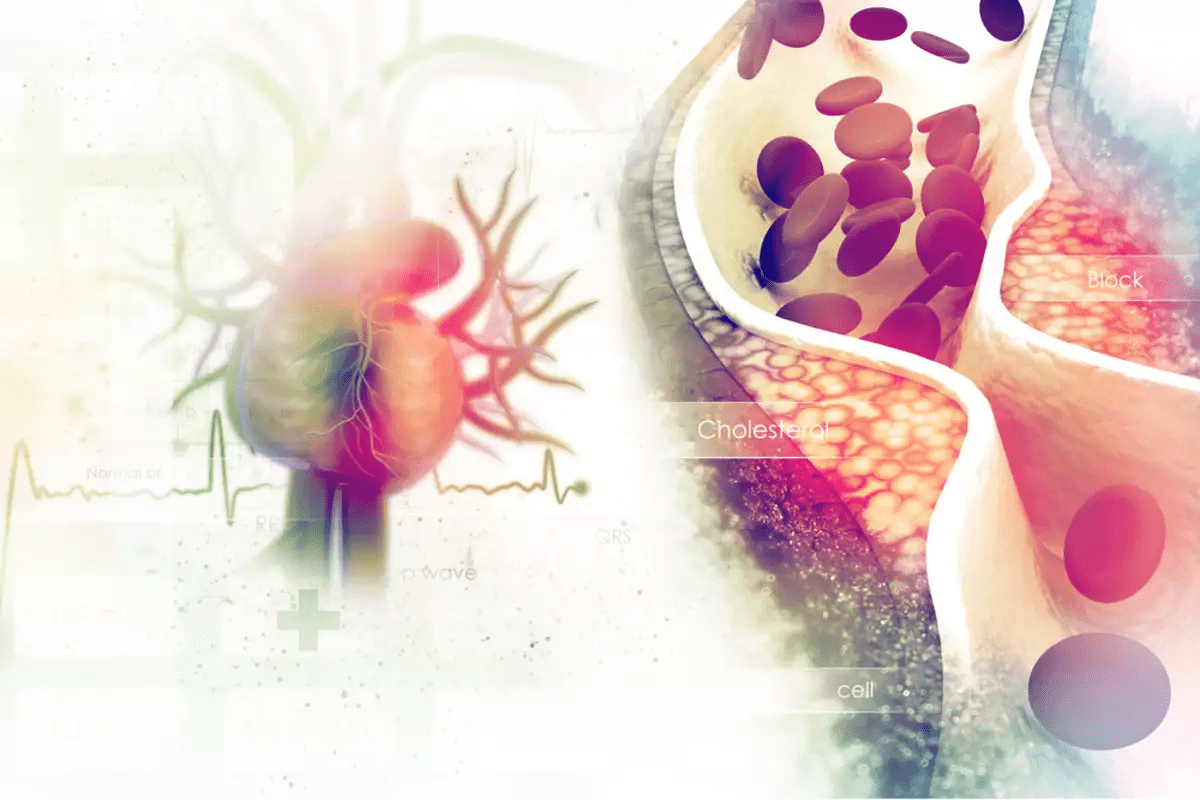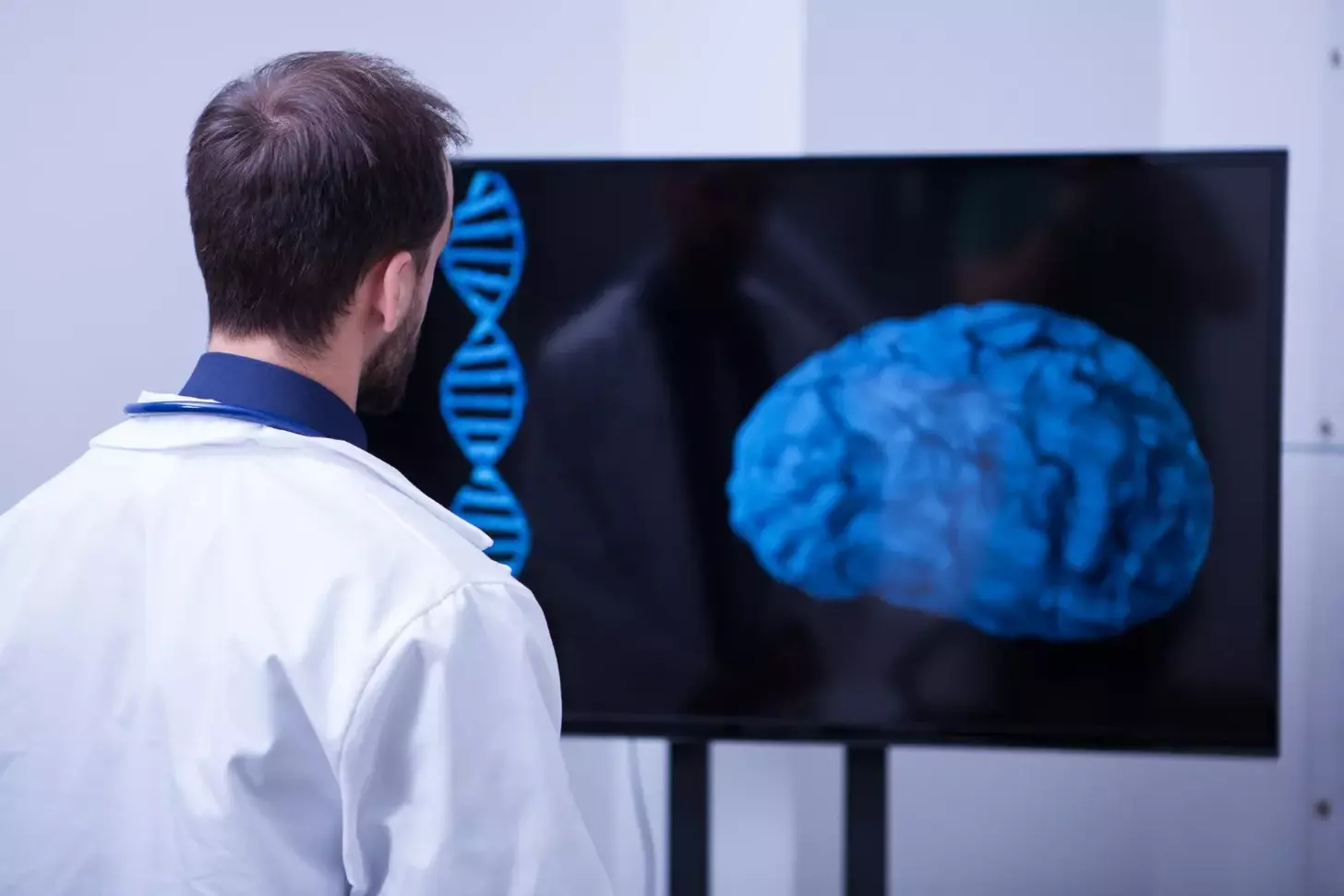Last Updated on November 26, 2025 by Bilal Hasdemir

At Liv Hospital, we know how vital adjuvant therapy is in cancer care. Adjuvant treatment is extra help given after the main treatments. It aims to boost the overall effect and lower the chance of cancer coming back.
We add adjuvant therapies to main treatments like surgery or radiation. This helps get rid of any cancer cells left behind. It makes it less likely for cancer to come back, helping patients live longer.
Our team works together to give you the best care. We want you to know about the benefits and definitions of adjuvant therapy. It’s key to your recovery.
Key Takeaways
- Adjuvant therapy is a supplementary treatment given after primary cancer treatment.
- It aims to eliminate remaining cancer cells and reduce the risk of recurrence.
- Adjuvant therapy can significantly improve long-term survival rates for various cancers.
- Our team at Liv Hospital provides multidisciplinary, patient-centered care.
- Understanding adjuvant therapy is vital for patients to make informed decisions about their care.
Adjuvant Cancer Treatment: Definition and Core Concepts
Adjuvant cancer treatment is a key part of cancer care. It’s therapy given after the main treatment to lower cancer coming back.
The Fundamental Principles of Adjuvant Therapy
The main idea of adjuvant therapy is to get rid of any cancer cells left after the first treatment. This is because tiny cancer cells can stay in the body, even after the main treatment.
Key principles include:
- Targeting microscopic disease to prevent recurrence
- Using evidence-based treatments to maximize efficacy
- Tailoring therapy to the individual patient’s risk profile
Timing: Understanding the “Adjuvant Setting”
The adjuvant setting is the time after the first treatment when more treatments are given. Starting adjuvant treatment early is key. It works best before any tiny cancer cells can grow or spread.
| Treatment Phase | Primary Goal | Typical Treatments |
|---|---|---|
| Primary Treatment | Remove or destroy the main tumor | Surgery, Radiation, Chemotherapy |
| Adjuvant Treatment | Eliminate remaining cancer cells | Chemotherapy, Hormone Therapy, Targeted Therapy |
Understanding adjuvant therapy’s basics and timing helps us see its importance in cancer care. Our aim is to create personalized, effective plans. These plans aim to improve patient outcomes and quality of life.
The Critical Purpose of Adjuvant Cancer Therapy
Adjuvant therapy is a key part of cancer treatment. It aims to lower the chance of cancer coming back. After the main treatment, like surgery, it helps get rid of any cancer cells left behind.
Eliminating Microscopic Disease After Primary Treatment
Adjuvant cancer therapy targets tiny cancer cells left after main treatment. Even after surgery, small cancer cells can stay in the body. Adjuvant chemotherapy kills these cells, lowering the chance of cancer returning.
Research shows adjuvant therapy boosts survival rates for many cancers. For example, in breast cancer, it cuts down recurrence risk and boosts survival.
Preventing Cancer Recurrence and Metastasis
Adjuvant therapy also stops cancer from coming back and spreading. It kills microscopic disease, stopping cancer cells from moving to other parts of the body. This is key for cancers that easily spread, like some breast and lung cancers.
- Adjuvant therapy reduces the risk of cancer recurrence.
- It helps in preventing metastasis by targeting remaining cancer cells.
- Adjuvant treatments, such as chemotherapy and radiation, are tailored to the specific needs of the patient.
Doctors say, “The goal of adjuvant therapy is to give patients the best chance of a cure by getting rid of any remaining cancer cells.” This shows how vital adjuvant therapy is in treating cancer.
“Adjuvant therapy has changed how we fight cancer, giving patients a much better chance of survival.”
How Adjuvant Treatment Differs from Other Cancer Therapies
Adjuvant cancer treatment plays a key role in care, but what sets it apart? We need to look at how it compares to other treatments.
Adjuvant treatment is given after the main treatment, like surgery. It aims to get rid of any cancer cells left behind. This helps lower the chance of cancer coming back. Other treatments might be given before or instead of the main treatment.
Adjuvant vs. Neoadjuvant Approaches
Adjuvant and neoadjuvant therapies are two different methods. Neoadjuvant chemotherapy is used before surgery to make tumors smaller. This makes them easier to remove. Adjuvant treatment, on the other hand, is given after surgery to kill any cancer cells left behind.
The main goal of neoadjuvant therapy is to help the main treatment work better. Adjuvant therapy’s goal is to stop cancer from coming back by getting rid of any remaining cancer cells.
Adjuvant vs. Palliative Treatment Goals
Adjuvant and palliative care also have different goals. Palliative care focuses on easing symptoms and improving life quality for those with advanced cancer. It’s not meant to cure the disease but to offer comfort and support.
For example, someone with early-stage breast cancer might get adjuvant chemotherapy to prevent cancer from coming back. But someone with advanced cancer might get palliative care to manage pain and symptoms. Knowing these differences helps in making the right treatment choices.
Here are some key points to remember:
- Timing: Adjuvant treatment is given after primary treatment, while neoadjuvant treatment is given before.
- Goals: Adjuvant therapy aims to prevent recurrence, whereas neoadjuvant therapy aims to make primary treatment more effective, and palliative care focuses on symptom management.
- Application: Adjuvant treatment is used for patients with a high risk of recurrence, while palliative care is typically used for patients with advanced or metastatic disease.
For more information on cancer treatment, including adjuvant therapies.
f Adjuvant Cancer Treatments
Adjuvant cancer treatment aims to get rid of any cancer cells left after the main treatment. It’s key to lower the chance of cancer coming back and to help patients do better.
Systemic Adjuvant Therapies
Systemic adjuvant therapies target cancer cells all over the body. They are used when cancer might have spread from the original tumor. These include:
- Chemotherapy: Drugs are used to kill cancer cells. It’s a common treatment for many cancers.
- Hormone Therapy: For cancers that grow because of hormones, like some breast and prostate cancers, hormone therapy blocks these hormones. It helps lower the chance of cancer coming back.
- Immunotherapy: This boosts the body’s immune system to fight cancer cells better.
- Targeted Therapies: These treatments aim at specific parts of cancer cells, like proteins or genes. They stop cancer from growing and spreading.
Localized Adjuvant Treatments
Localized adjuvant treatments target cancer cells in a specific area. The main type is:
- Radiation Therapy: High-energy rays are used to kill cancer cells in one area. This lowers the risk of cancer coming back in that area.
We pick treatments based on the cancer type, its stage, and the patient’s health. By mixing systemic and localized treatments, we create a plan that fits each patient’s needs.
Choosing between systemic and localized treatments depends on many things. It’s a complex decision that a team of healthcare experts makes together.
Adjuvant Chemotherapy: Applications and Protocols
Adjuvant chemotherapy is key in getting rid of cancer cells left after the first treatment. It’s a big part of cancer care and helps patients a lot.
Mechanism of Action
In the adjuvant setting, chemotherapy goes after tiny cancer cells left after surgery or radiation. Chemotherapy drugs mess with the DNA of cancer cells, stopping them from growing. This treatment can reach cancer cells in other parts of the body, helping prevent it from coming back.
Common Drug Regimens and Duration
The type of chemotherapy depends on the cancer, its stage, and the patient’s health. Here are some common ones:
- AC-T (Adriamycin, Cyclophosphamide, followed by Taxotere) for breast cancer
- FOLFOX (5-Fluorouracil, Leucovorin, Oxaliplatin) for colorectal cancer
- BEP (Bleomycin, Etoposide, Platinum) for testicular cancer
Treatment lasts from 3 to 6 months, based on the plan and how the patient responds.
Patient Selection Criteria
Choosing who gets adjuvant chemotherapy involves looking at several things. Multidisciplinary tumor boards help decide the best treatment for each patient.
Important factors include:
- Cancer stage and grade
- Hormone receptor and HER2 status
- Patient’s overall health and preferences
Adjuvant chemotherapy is a key part of cancer care, giving patients a better chance of survival. Knowing how it works helps doctors create treatment plans that fit each patient’s needs.
Hormone Therapy as Adjuvant Treatment for Cancer
Hormone therapy has changed how we treat some cancers, like breast and prostate cancer. It’s used to stop cancer from coming back after surgery. This is because some cancers grow because of hormones in the body.
Breast Cancer Hormone Therapy Approaches
In breast cancer, hormone therapy is for tumors that need hormones to grow. The goal is to stop these hormones from reaching the cancer cells. This helps stop the cancer from growing.
There are a few ways to do this:
- Selective estrogen receptor modulators (SERMs) like tamoxifen, which stop estrogen from helping the cancer grow.
- Aromatase inhibitors (AIs) that lower estrogen levels by blocking the enzyme that makes it.
These treatments have been proven to lower the chance of cancer coming back in hormone-sensitive breast cancer patients.
Prostate Cancer Adjuvant Hormonal Treatments
In prostate cancer, hormone therapy is used to lower male hormones like testosterone. These hormones help prostate cancer grow.
There are a few ways to do this:
- Gonadotropin-releasing hormone (GnRH) agonists or antagonists, which lower testosterone levels.
- Anti-androgens that stop androgens from working on prostate cancer cells.
| Therapy Type | Mechanism of Action | Cancer Type |
|---|---|---|
| SERMs (e.g., Tamoxifen) | Blocks estrogen receptors | Breast Cancer |
| Aromatase Inhibitors | Lowers estrogen levels | Breast Cancer |
| GnRH Agonists/Antagonists | Reduces testosterone production | Prostate Cancer |
| Anti-androgens | Blocks androgen action | Prostate Cancer |
Understanding hormone therapy’s role in treating cancer helps us see its importance. It’s key in helping patients with hormone-sensitive cancers.
Adjuvant Radiation Therapy: Techniques and Benefits
Modern cancer treatment often includes adjuvant radiation therapy. It targets microscopic disease left after primary treatment. This method is key in managing many cancers, improving patient outcomes by lowering local recurrence risk.
Modern Radiation Approaches After Surgery
Recent advances in radiation therapy have brought more precise and effective treatments. Techniques like intensity-modulated radiation therapy (IMRT) and image-guided radiation therapy (IGRT) allow for precise radiation delivery. This minimizes harm to healthy tissues around the tumor.
Key benefits of modern radiation approaches include:
- Improved precision in targeting residual cancer cells
- Reduced risk of damage to surrounding healthy tissues
- Enhanced patient outcomes due to more effective treatment
Targeted Radiation to Prevent Local Recurrence
Adjuvant radiation therapy aims to remove microscopic cancer cells left after surgery. It targets the tumor bed and high-risk areas, lowering local recurrence chances.
As noted by cancer research experts, “The integration of adjuvant radiation therapy into cancer treatment protocols has been a major factor in improving survival rates and reducing recurrence.”
Our team at the cancer center uses advanced radiation therapy techniques for personalized care. We tailor treatment plans to meet each patient’s needs, aiming to improve outcomes and quality of life.
The role of adjuvant radiation therapy in oncology is vital. Understanding its methods and benefits helps patients and healthcare providers make informed treatment choices. This leads to better patient outcomes.
Emerging Adjuvant Treatments: Immunotherapy and Targeted Therapies
The field of adjuvant cancer treatment is changing with new treatments. Immunotherapy and targeted therapies are being studied to help the body fight cancer better. They aim to target specific parts of cancer cells and improve treatment results.
Checkpoint Inhibitors in the Adjuvant Setting
Checkpoint inhibitors are a new type of immunotherapy. They help the immune system fight cancer by blocking certain proteins. This makes it easier for the body to attack cancer cells.
Studies show these treatments can help prevent cancer from coming back. They are being tested in cancers like melanoma, lung cancer, and kidney cancer.
Targeted Molecular Therapies After Primary Treatment
Targeted molecular therapies are another new area in treatment. They focus on specific genetic changes in cancer cells. By targeting these changes, they can stop cancer from coming back.
In breast cancer, treatments targeting HER2-positive tumors have been very effective. This shows how important it is to match treatments to the specific cancer.
Combination Approaches for Enhanced Efficacy
Using different treatments together is a promising idea. For example, combining immunotherapy with other therapies might work better. Researchers are looking at different combinations to find the best ones.
It’s important to keep an eye on the side effects of these new treatments. More research is needed to make sure they are safe and effective. This will help us find better ways to treat cancer.
Cancer-Specific Adjuvant Treatment Approaches
Adjuvant cancer treatments vary by cancer type. Each cancer needs a unique treatment plan. The choice depends on the cancer type, stage, and biological traits. We’ll look at treatments for breast, colorectal, and lung cancers, focusing on new advancements and guidelines.
Breast Cancer Adjuvant Therapy Standards
Adjuvant therapy is key for early-stage breast cancer. It’s chosen based on tumor size, grade, hormone receptor status, and HER2 status.
- Chemotherapy: Given to those with high-risk disease, before or after surgery.
- Hormone Therapy: Used for hormone receptor-positive cancer to lower recurrence risk.
- Targeted Therapy: HER2-positive patients get targeted therapies like trastuzumab.
Colorectal Cancer Adjuvant Protocols
Colorectal cancer treatment often includes chemotherapy, sometimes with radiation. This depends on the tumor’s stage and location.
- Stage III Disease: Adjuvant chemotherapy is standard for stage III colon cancer, using fluoropyrimidine-based regimens.
- Rectal Cancer: Treatment may include chemotherapy and radiation to lower local recurrence risk.
Studies are looking into targeted therapies for colorectal cancer, showing promising results.
Lung Cancer Adjuvant Treatment Advances
Lung cancer treatment has seen big changes. Chemotherapy is key for early-stage non-small cell lung cancer (NSCLC).
- Chemotherapy: It improves survival for patients with resected NSCLC, mainly in stages II and III.
- Targeted Therapy and Immunotherapy: New evidence supports their use in NSCLC, based on molecular profiling.
These developments mark a shift towards more personalized lung cancer treatment, leading to better patient outcomes.
The Multidisciplinary Approach to Adjuvant Treatment Planning
Creating personalized adjuvant treatment plans is key. It involves experts from oncology, surgery, pathology, and radiology. This ensures a complete care approach.
Tumor Board Recommendations and Personalized Plans
Tumor boards are vital in planning adjuvant treatments. They bring specialists together to review cases and make plans. Experts from different fields help tailor treatments for each patient.
These boards look at all angles to find the best treatments. This teamwork makes treatments more precise. It can lead to better results for patients.
Integrating Pathology and Molecular Testing
Pathology and molecular testing guide treatment choices. They give insights into the tumor’s genetic makeup. This helps doctors pick targeted therapies that work better.
Molecular tests show genetic changes that affect treatment response. Using this info, doctors can offer more personalized care. This care is likely to be more effective.
Evidence-Based Benefits of Adjuvant Cancer Treatment
Adjuvant therapy in cancer treatment offers many benefits. It improves survival rates and quality of life. It’s a key part of cancer care, helping patients across different types of cancer.
Survival Rate Improvements Across Cancer Types
Adjuvant therapy boosts survival rates for various cancers. It gets rid of tiny cancer cells left after primary treatment. This lowers the chance of cancer coming back.
In breast cancer, treatments like chemotherapy and hormone therapy have greatly improved survival. For colorectal cancer, chemotherapy is now a standard to prevent cancer from coming back. Learn more about first-line treatments for oncology and how adjuvant therapy fits into them.
Research shows adjuvant therapy significantly improves survival and disease-free rates. For example, in breast cancer, chemotherapy cuts recurrence risk by up to 30%. This highlights adjuvant therapy’s role in modern cancer care.
Quality of Life Considerations and Supportive Care
Adjuvant therapy is key for survival but also affects quality of life. It can cause side effects that impact physical and emotional health. Supportive care is vital to manage these effects and improve life quality.
A team approach to care is essential. It includes specialized services like pain management, nutrition support, and counseling. This approach helps reduce therapy’s negative effects and improves outcomes.
Balancing Benefits Against Side Effects
One big challenge is weighing therapy benefits against side effects. Adjuvant therapy aims to prevent cancer return but can be toxic. It’s important to consider each patient’s unique situation.
We tailor treatment plans to each patient. This considers cancer type, stage, and overall health. This approach maximizes therapy’s benefits while reducing harm, improving life quality and outcomes.
Conclusion: The Future of Adjuvant Therapy in Modern Oncology
Understanding adjuvant cancer treatment is key in modern oncology. It has changed cancer treatment by lowering recurrence rates and improving survival. Research is ongoing to make adjuvant therapies better and to find new treatments like immunotherapy and targeted therapies.
New trends in adjuvant therapy are making patient outcomes better. We’re seeing big steps forward in treatments for cancers like breast, colorectal, and lung. Molecular testing and personalized plans are becoming more important in treatment planning.
Adjuvant therapy will keep being a big part of cancer treatment. It gives patients the best chance for long-term survival and a good quality of life. Healthcare providers can offer the best care by keeping up with these advances.
FAQ
What is adjuvant cancer treatment?
Adjuvant cancer treatment is given after main treatments like surgery or radiation. It aims to get rid of any cancer cells left behind. This helps lower the chance of cancer coming back.
What is the purpose of adjuvant therapy?
The main goal of adjuvant therapy is to kill off tiny cancer cells left after main treatments. This stops cancer from coming back and spreading.
How does adjuvant treatment differ from neoadjuvant treatment?
Adjuvant treatment comes after main treatments. Neoadjuvant treatment is given before to shrink tumors. This makes them easier to remove surgically.
What are the major types of adjuvant cancer treatments?
Main types include systemic treatments like chemotherapy, hormone therapy, and immunotherapy. Localized treatments like radiation therapy are also used.
How is adjuvant chemotherapy used in cancer treatment?
Adjuvant chemotherapy targets and kills cancer cells left in the body. It lowers the risk of cancer coming back in many types of cancer.
What is the role of hormone therapy in adjuvant cancer treatment?
Hormone therapy is used for hormone-sensitive cancers like breast and prostate cancer. It blocks or lowers hormone production to reduce recurrence risk.
How does adjuvant radiation therapy work?
Adjuvant radiation therapy targets areas where cancer might come back. It kills off remaining cancer cells and lowers local recurrence risk.
What are emerging trends in adjuvant cancer treatment?
New trends include using immunotherapy, targeted therapies, and combining treatments. These aim to boost immune responses and improve outcomes.
How is adjuvant treatment planned and personalized?
Treatment planning involves a team approach, including tumor boards. It uses pathology and molecular testing to create personalized plans.
What are the benefits of adjuvant cancer treatment?
Benefits include better survival rates, lower recurrence risk, and improved quality of life. These apply to various cancer types.
What is the importance of considering quality of life in adjuvant treatment?
Quality of life is key in adjuvant treatment. It helps manage therapy side effects and provides supportive care. This ensures a good balance between benefits and side effects.
How does adjuvant therapy impact cancer recurrence and metastasis?
Adjuvant therapy prevents recurrence and metastasis by killing off microscopic disease. This improves patient outcomes significantly.
References
Wikipedia: Adjuvant therapy
PubMed Central (NCBI): Predictive and Prognostic Biomarkers for Adjuvant Therapy in Cancer








